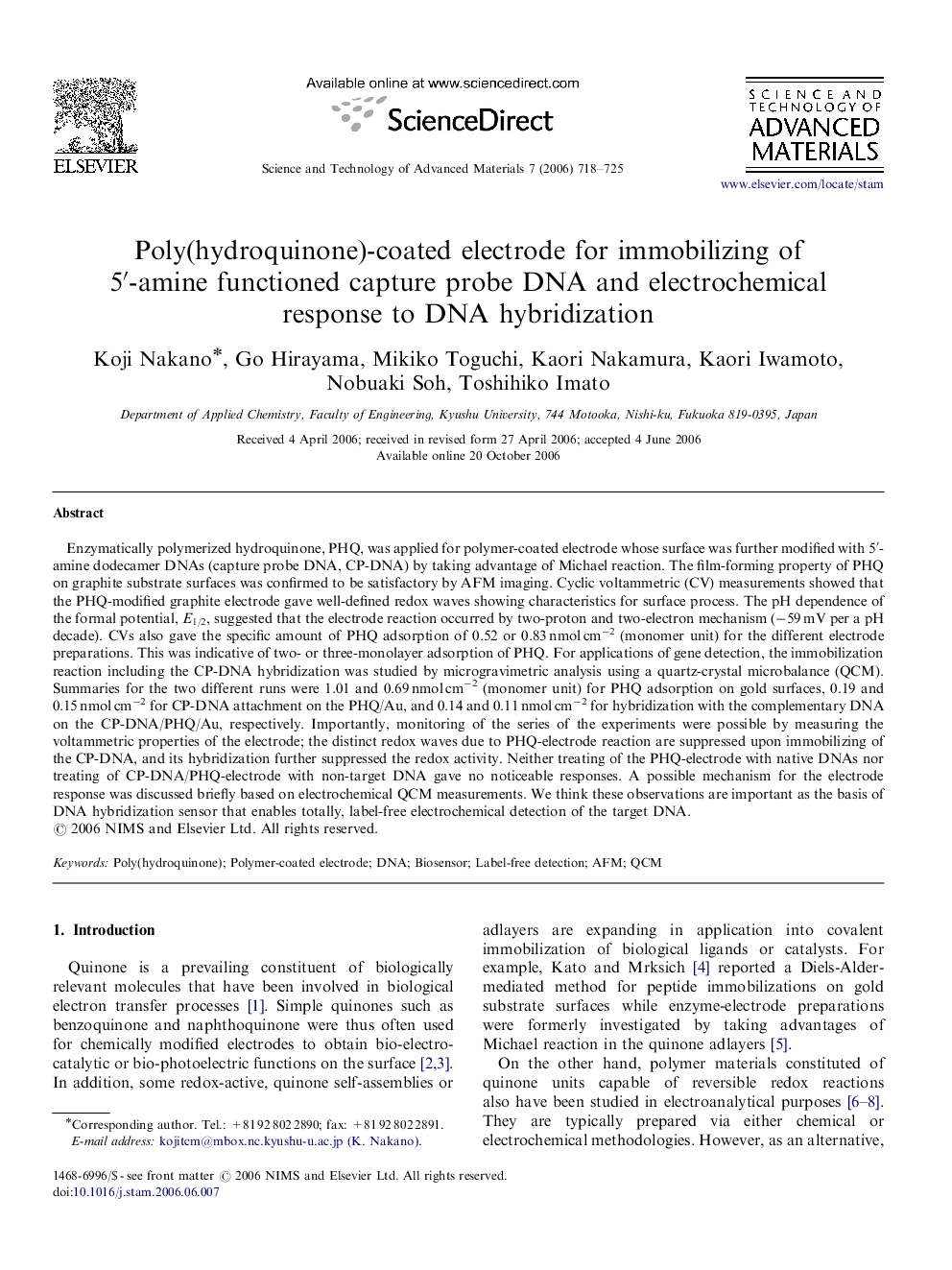| کد مقاله | کد نشریه | سال انتشار | مقاله انگلیسی | نسخه تمام متن |
|---|---|---|---|---|
| 1590903 | 1515470 | 2006 | 8 صفحه PDF | دانلود رایگان |
عنوان انگلیسی مقاله ISI
Poly(hydroquinone)-coated electrode for immobilizing of 5â²-amine functioned capture probe DNA and electrochemical response to DNA hybridization
دانلود مقاله + سفارش ترجمه
دانلود مقاله ISI انگلیسی
رایگان برای ایرانیان
کلمات کلیدی
موضوعات مرتبط
مهندسی و علوم پایه
مهندسی مواد
دانش مواد (عمومی)
پیش نمایش صفحه اول مقاله

چکیده انگلیسی
Enzymatically polymerized hydroquinone, PHQ, was applied for polymer-coated electrode whose surface was further modified with 5â²-amine dodecamer DNAs (capture probe DNA, CP-DNA) by taking advantage of Michael reaction. The film-forming property of PHQ on graphite substrate surfaces was confirmed to be satisfactory by AFM imaging. Cyclic voltammetric (CV) measurements showed that the PHQ-modified graphite electrode gave well-defined redox waves showing characteristics for surface process. The pH dependence of the formal potential, E1/2, suggested that the electrode reaction occurred by two-proton and two-electron mechanism (â59 mV per a pH decade). CVs also gave the specific amount of PHQ adsorption of 0.52 or 0.83 nmol cmâ2 (monomer unit) for the different electrode preparations. This was indicative of two- or three-monolayer adsorption of PHQ. For applications of gene detection, the immobilization reaction including the CP-DNA hybridization was studied by microgravimetric analysis using a quartz-crystal microbalance (QCM). Summaries for the two different runs were 1.01 and 0.69 nmol cmâ2 (monomer unit) for PHQ adsorption on gold surfaces, 0.19 and 0.15 nmol cmâ2 for CP-DNA attachment on the PHQ/Au, and 0.14 and 0.11 nmol cmâ2 for hybridization with the complementary DNA on the CP-DNA/PHQ/Au, respectively. Importantly, monitoring of the series of the experiments were possible by measuring the voltammetric properties of the electrode; the distinct redox waves due to PHQ-electrode reaction are suppressed upon immobilizing of the CP-DNA, and its hybridization further suppressed the redox activity. Neither treating of the PHQ-electrode with native DNAs nor treating of CP-DNA/PHQ-electrode with non-target DNA gave no noticeable responses. A possible mechanism for the electrode response was discussed briefly based on electrochemical QCM measurements. We think these observations are important as the basis of DNA hybridization sensor that enables totally, label-free electrochemical detection of the target DNA.
ناشر
Database: Elsevier - ScienceDirect (ساینس دایرکت)
Journal: Science and Technology of Advanced Materials - Volume 7, Issue 7, October 2006, Pages 718-725
Journal: Science and Technology of Advanced Materials - Volume 7, Issue 7, October 2006, Pages 718-725
نویسندگان
Koji Nakano, Go Hirayama, Mikiko Toguchi, Kaori Nakamura, Kaori Iwamoto, Nobuaki Soh, Toshihiko Imato,